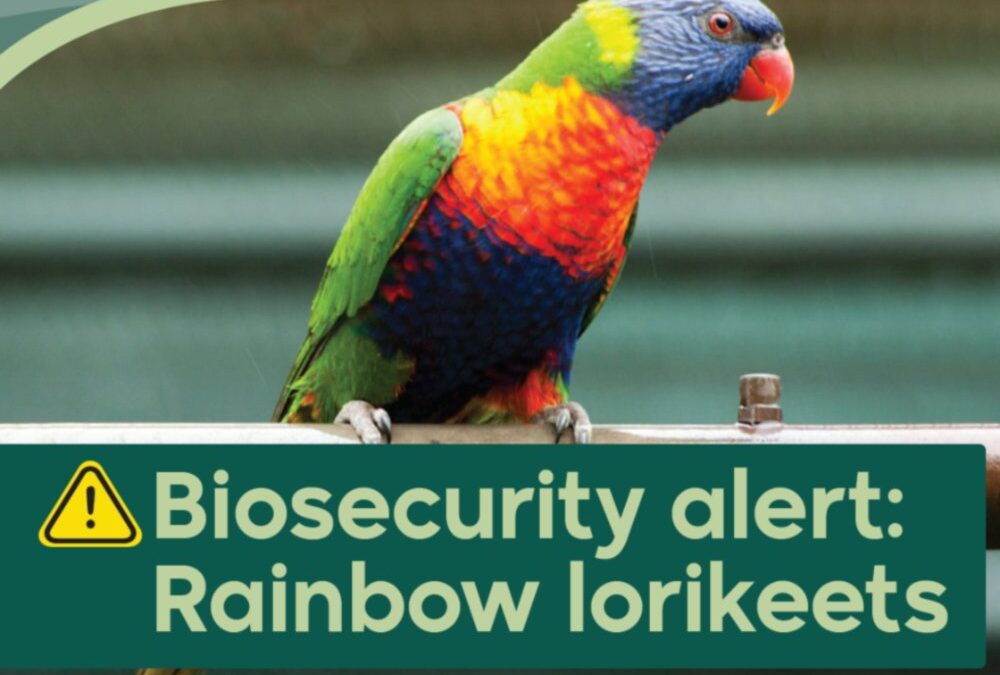There have been some recent suspected sightings of Rainbow Lorikeets in the Australind/Bunbury area. Community members in the South West are asked to keep a lookout and report any suspected sightings of this invasive bird to help prevent this species from establishing populations in the South West.
Rainbow lorikeets (Trichoglossus haematodus) are a declared pest in Western Australia.The birds are a major agricultural pest, significantly damaging commercial table grape and orchard fruit crops, as well as vegetable and field crops. The rainbow lorikeet is already established in the Perth metropolitan area, so it’s very important the bird doesn’t establish populations in the South West.
REPORT SUSPECTED SIGHTINGS TO DPIRD*:
Please report any suspected sightings of Rainbow Lorikeets in South West
MyPestGuide® Reporter via app or online at mypestguide.agric.wa.gov.au
or report to Pest and Disease Information Service (08) 9368 3080 or by e-mail at: padis@dpird.wa.gov.au
How they sound: Rainbow Lorikeets are are noisy birds and have a high-pitched tone with frequent squawks and constant screeching and chaotic noise while feeding. Their sometimes shrill vocalizations can be abrasive and unpleasant.
Click here for video to hear & see Rainbow Lorikeets
Find out more: DPIRD Biosecurity Alert _ Rainbow Lorikeets fact sheet
Key points:
- Small, about 30cm long
- distinctive, colourful feathers and an orange beak
- aggressively compete with native birds for nest holes, chasing away other birds from their nests in the area, even magpies
- spend most of their time in outer foliage of tall trees, including exotic lemon-scented gums, cotton palms, date palms, fig, and native jarrah trees
- roost in very large, noisy groups, leaving roosts at dawn
- constant screeching and chaotic noise while feeding and at their roosts
- acrobatic and swift, they fly high and rarely go to ground
*Department of Primary Industries and Regional Industries


Recent Comments